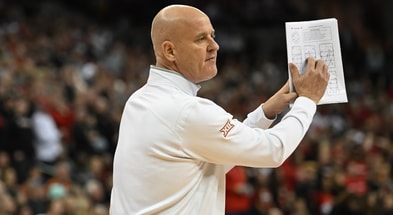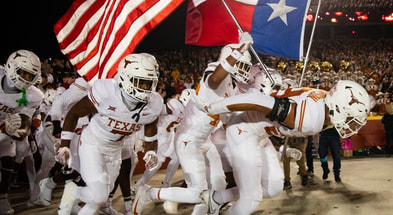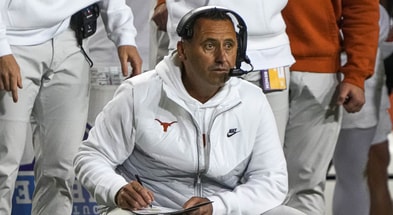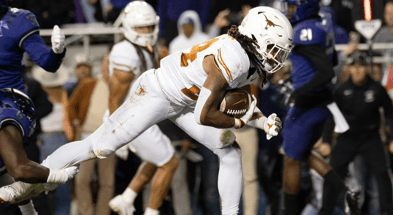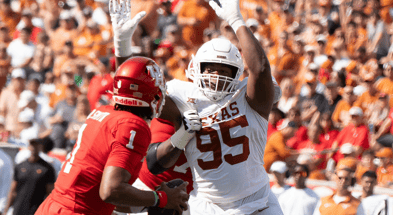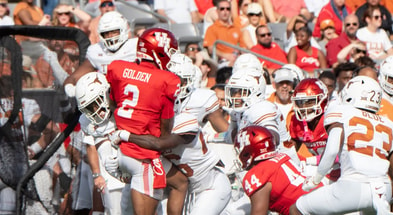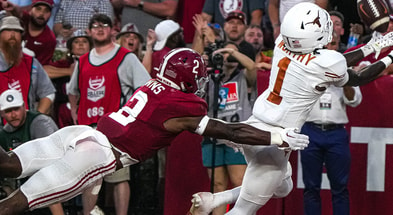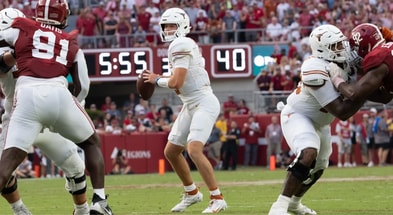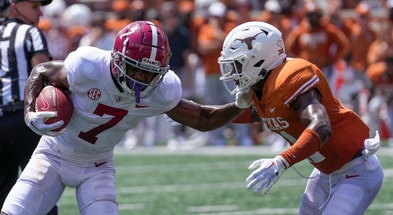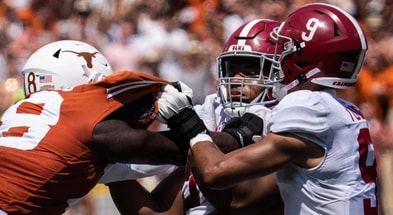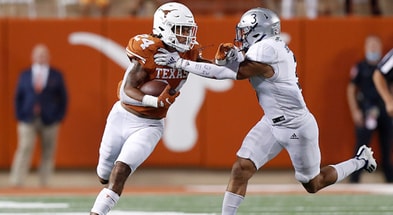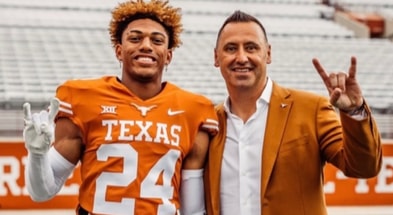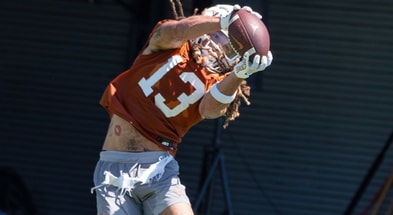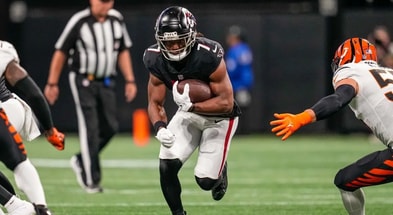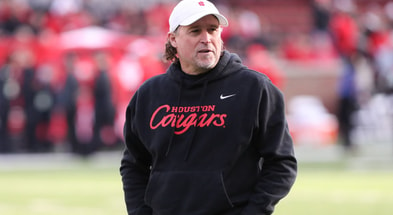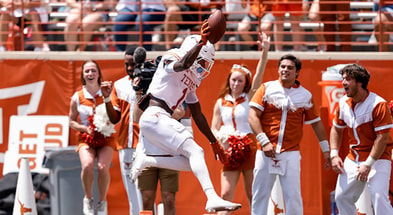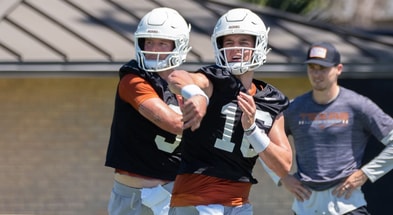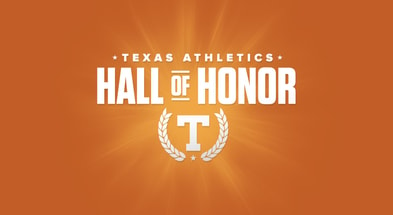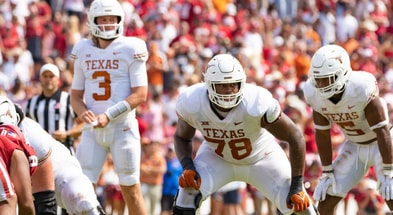2022 Washington Alamo Bowl Postmortem: Defense
Never has a solid surface performance by the Texas defense been so emblematic of the virtues and vices of the staff’s approach to the 2022 Longhorn defense than the 2022 Alamo Bowl. The game was a model of the divergence between statistics and game theory; game plan and game situation. And understanding which is the product or servant of the other.
[Get Inside Texas Plus until the start of the 2023 season for $10!]
Texas did a lot of good things. The defense held down a Husky offense averaging over 7 yards per play to 5.4 per play and an offensive unit scoring over 40 points per game to almost two touchdowns under their season average. Veteran QB and FBS leading passer Michael Penix was a pedestrian 32 of 55 for 287 yards (an anemic 5 yards per attempt) and one of the most prolific deep ball offenses in college football was limited to only 9 yards per completion. Washington’s longest completion of the night was a 35 yard flea flicker to Ja’Lynn Polk on the second play of the game on a well-contested reception. The next longest Husky completion went for only 18 yards. Texas didn’t bust any deep coverages despite losing Ryan Watts for large portions of the second half while freshmen Austin Jordan and Terrance Brooks saw considerable action. The high flying Huskies were grounded and Longhorns defensive backs like Barron, Watts and Thompson won the vast majority of their matchups.
Unfortunately, a plane can taxi its way to victory if you don’t throw up roadblocks on critical downs…
Despite Washington’s macro passing game struggles, the micro of money downs was much less kind to Texas. Washington was 11/20 on 3rd down and 2/3 on 4th down. On their last 14 3rd down snaps, they were 9 of 14. That’s a 64.2% conversion rate and that’s bad football. Losing football, in fact. Both 4th down conversions happened on the Husky side of the field on drives that led to Washington touchdowns, allowing 14 points on the board in a one score contest.
Aside from the money down problem where Texas consistently came up a dollar short, the Huskies may have also exploited another Longhorn habit – indiscriminate defensive substitutions. Yep, Texas has to rest guys. The staff also has to properly marry the combinations it is putting out on the field. Washington was able to pop a long touchdown run attacking Longhorn personnel that featured weak link Vernon Broughton (you can read my trail of postmortems documenting this) backed by a drifting David Gbenda. You can play either, but not at the same time. And not against the run. Some other Longhorn personnel aren’t glorious on this play, but Broughton/Gbenda are a fatal combo.
Zooming out to 10,000 feet, Texas was done in by an inability to understand dynamic game theory and how a big picture “successful” per play approach must be modified when it lessens total team win probability. In other words, the Texas offense can’t score points without the ball and no one cares about how much Texas suppressed Washington’s offense per play if that offense maintains the ball and still scores, even if in deliberate slow-motion agony.
The story of the season is that advanced statistics love Texas, but the scoreboard doesn’t. How Texas plays defense during critical leverage points is one of the reasons why.
From their last possession of the first half, Washington had these four consecutive drives:
| U W | 2nd | U W20 | 04:50 | PUNT | U T6 | 00:00 | FG | 16-74 | 4:50 |
| U W | 3rd | U W25 | 12:31 | KO | U T0 | 06:44 | TD | 13-75 | 5:47 |
| U W | 3rd | U W10 | 05:05 | PUNT | U T0 | 13:08 | TD | 14-90 | 6:57 |
| U W | 4th | U W25 | 09:50 | KO | U T37 | 04:21 | DOWNS | 13-38 | 5:29 |
Aside from those four clock-strangling drives putting 17 points on the board — the ultimate measure of efficacy — Texas ceded Washington total control of the football game with an incredible 23 minutes of possession, freezing out a Longhorn offense beginning to find its legs, allowed UW to preserve their own vulnerable defense, and virtually guaranteed an end of game scenario with one meaningful Texas possession and an onside kick to overcome two scores rather than multiple meaningful possessions in a one score game where anything can happen.
The drives above included Washington converting a 4th and 1 on their own 34 yard line to push a 13-10 lead to 20-10 and converting a 4th and 2 at midfield to eventually create a 27-10 deficit. In addition to converting a seemingly endless barrage of 3rd and 6’s or less.
Perhaps the most disheartening 4th quarter drive resulted in no Husky points at all. Washington drained 5:29 off of the clock on 13 plays before eventually turning the ball over on downs up 27-17 at the 4:21 mark of the 4th quarter. They deprived Texas of as many as three possible real end of game possessions, reducing the Longhorn offense to one possession and an onside kick prayer.
The Longhorn defense played that excruciating drive much as it had played others, seemingly unaware that the clock and continued Husky possession of the ball was the larger enemy than the possibility of a deep ball Washington hadn’t hit in 3.5 quarters of play. When Penix did hold on to the ball for a downfield throw, the result was a near pick by Terrance Brooks. At that point, getting the ball back quickly is the only thing that matters. Even if you concede that the other team increases their chances of a big play. You have to press receivers, jump routes, destroy the run, force incompletions, run the calls you’ve kept in your back pocket ’til now and force Washington to make the hard throws they’ve not yet converted. That didn’t happen and the Texas defense preserved its statistical profile (“we held them to less than 3 yards per play on that drive!”) while watching unforgiving minutes dwindle and reduce the needed bites at the apple to actually win the game. Ultimately, evolving to the best winning strategy based on game situation is the responsibility of the head coach.
DL
Texas didn’t get much from its edges for four quarters, but Sorrell was the brightest spot in the unit. Finkley got big-brothered on too many of his snaps and you can see how lack of length impacts him against experienced size outside. Oghoufo was a non-entity as a pass rusher. The inside guys had their moments, but Washington’s moving pockets, decent pass blocking and Penix’s talent for throwing quickly at weird angles negated the more satisfying potential impacts of a pass rush. If you rewatch the game with less emotion, Texas did a good job of altering the pocket overall when Penix held the ball, but the inability to find another page on key downs ultimately sunk them. Murphy, Coburn and Sweat all had good throw-altering hits during Penix’s release.
LB
Texas may have missed DMO more than Bijan Robinson. And Texas missed Bijan Robinson a lot. Overshown would have feasted on the short see-ball, chase-ball passing game and enjoyed running down the Husky QB when he flushed the pocket. Rough outing for both DTD and Gbenda. If Longhorn coaches and fans don’t understand the importance of acquiring at least one more real starter quality portal LB, they do now. Two would be nicer. It felt like Ford was trying to hold down the entire second level by himself and the Huskies were clever in getting #41 offset by alignment and focusing on lesser defenders.
DB
I thought the unit played well as a whole. Very few meaningful busts across the board and Jerrin Thompson was terrific coordinating traffic and in coverage. 11 tackles and a pick. Good hard hit on a Penix keeper and palpable intensity for four quarters. He’s my defensive MVP along with Barron.
Jahdae Barron was really good. Would have liked to have seen him allowed to fire harder on Washington’s screen and short game late hunting negative plays and turnovers. Barron drew a good slot receiver and consistently won the matchup.
Watts gutted it out through injury in the 2nd half and had some good snaps in coverage. He didn’t look great on the long Husky TD run, but that thing fell apart well before he tried to rescue it. An untouched 210 running back with 20 yards of steam and a two way go isn’t an easy open field take down. D’shawn Jamison was more locked in than he has been for the second half of the season and had some good snaps.
Brooks and Jordan were very impressive. They clearly grew up quite a bit in bowl practices and the game seemed to slow down for them. Brooks very nearly turned the game late with a pick but the WR turned DB on him just enough.
Cook had 3 pass breakups and played pretty well. On the short touchdown throw he allowed, Washington had Texas beat by formation and the receiver made a great catch at his ankles.
The DB room can hold their heads high.
Final Thoughts
There’s a lot to like about how Texas prepared and played against the Husky offense. The defense was dialed in on a confusing Husky system and the Texas secondary won a lot of battles with their brains and legs, but the inability to capitalize on critical downs and the sideline brain trust’s reluctance to process or translate the larger game theory late to play calls was frustrating.
Ultimately, Steve Sarkisian is responsible for managing that calculus, not the defensive coordinator. It can’t just be Sark the offensive coordinator running his side of the ball while Pete runs his. If so, Texas won’t optimize in close games. It’s the head coach’s job to see the forest while his assistants obsess on the trees. Sometimes being tasked with your own grove obscures that.
